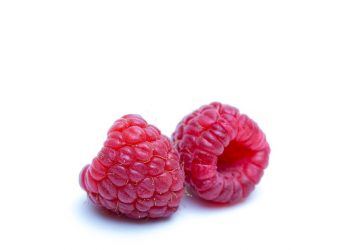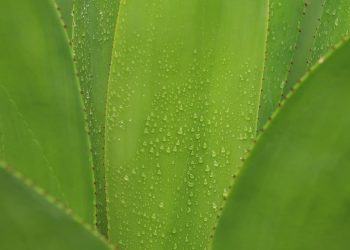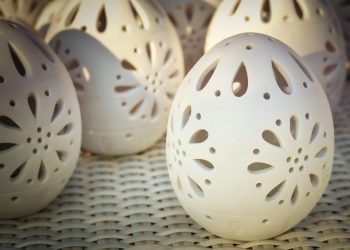The luteal phase diet is a game-changer for achieving hormonal balance. If you’ve ever felt like your hormones are on a rollercoaster ride, you’re not alone. This often-overlooked phase of your menstrual cycle can bring a whirlwind of emotional and physical changes. But with the right dietary strategies, you can soothe those fluctuations and feel like the best version of yourself.
Contents
- Understanding the Luteal Phase
- Why a Luteal Phase Diet Matters
- 1. Embrace Complex Carbohydrates
- 2. Load Up on Healthy Fats
- 3. Hydrate Like It’s Your Job
- 4. Include Magnesium-Rich Foods
- 5. Don’t Skip the Protein
- 6. Focus on Fiber
- 7. Limit Processed Foods and Sugar
- Putting It All Together: Meal Ideas
- Bottom Line
- FAQ
Understanding the Luteal Phase
The luteal phase occurs after ovulation and before your period starts. It typically lasts about 10 to 14 days. During this time, your body prepares for a potential pregnancy. If pregnancy doesn’t happen, hormone levels drop, leading to menstrual symptoms. This phase can bring mood swings, cravings, bloating, and fatigue. It’s crucial to focus on your body’s needs during this time.
Why a Luteal Phase Diet Matters
Your diet during the luteal phase can significantly impact how you feel. Certain foods can help balance your hormones, reduce PMS symptoms, and boost your mood. By knowing what to eat (and what to avoid), you can make this phase smoother and more manageable. Let’s dive into seven practical diet tips that will empower you to take control of your luteal phase.
1. Embrace Complex Carbohydrates
During the luteal phase, you may crave carbohydrates. Instead of reaching for sugary snacks, opt for complex carbs like whole grains, legumes, and vegetables. These foods help stabilize blood sugar levels, providing a steady energy source without the crash.
Benefits:
- Reduces mood swings
- Increases serotonin, the “feel-good” hormone
- Helps alleviate cravings
Suggestions:
- Quinoa
- Sweet potatoes
- Brown rice
2. Load Up on Healthy Fats
Healthy fats are your friends during the luteal phase. They are essential for hormone production and can help reduce inflammation. Think avocados, nuts, seeds, and olive oil. These foods help keep you satiated and can curb those pesky cravings.
Benefits:
- Supports hormone balance
- Improves mood
- Provides lasting energy
Suggestions:
- Almonds
- Walnuts
- Chia seeds
3. Hydrate Like It’s Your Job
Dehydration can exacerbate luteal phase symptoms, such as bloating and fatigue. Aim to drink plenty of water throughout the day. Herbal teas can also be a soothing option, especially those that promote relaxation.
Benefits:
- Reduces bloating
- Enhances digestion
- Supports energy levels
Suggestions:
- Aim for at least 8–10 cups of water daily
- Try ginger or chamomile tea for added benefits
4. Include Magnesium-Rich Foods
Magnesium plays a crucial role in hormone regulation. It can help alleviate mood swings, cramps, and bloating. Foods rich in magnesium include leafy greens, nuts, seeds, and whole grains.
Benefits:
- Reduces PMS symptoms
- Enhances relaxation
- Supports overall hormonal balance
Suggestions:
- Spinach
- Dark chocolate (yes, please!)
- Pumpkin seeds
5. Don’t Skip the Protein
Protein is vital for maintaining stable energy levels and muscle health. Incorporate high-quality protein sources into your meals, such as lean meats, fish, eggs, and plant-based proteins like lentils and chickpeas.
Benefits:
- Promotes satiety
- Stabilizes blood sugar levels
- Supports muscle repair
Suggestions:
- Salmon
- Chicken breast
- Tofu
6. Focus on Fiber
Fiber is your gut’s best friend, and a healthy gut supports hormone balance. It helps eliminate excess hormones from your system and keeps you feeling full. Include plenty of fruits, vegetables, and whole grains in your diet.
Benefits:
- Aids digestion
- Regulates hormone levels
- Promotes a feeling of fullness
Suggestions:
- Apples
- Broccoli
- Oats
7. Limit Processed Foods and Sugar
While it’s tempting to indulge in comfort foods, processed foods and refined sugars can wreak havoc on your hormones. They can lead to spikes in blood sugar, increased cravings, and mood swings.
Benefits:
- Reduces inflammation
- Stabilizes energy levels
- Enhances mood
Suggestions:
- Avoid soda and sweets
- Choose whole, minimally processed foods instead
Putting It All Together: Meal Ideas
Now that you have the tips, let’s look at some meal ideas that incorporate these strategies.
Breakfast:
- Overnight oats with almond milk, chia seeds, and berries
- Scrambled eggs with spinach and whole-grain toast
Lunch:
- Quinoa salad with chickpeas, cucumbers, and olive oil dressing
- Grilled chicken with sweet potato and steamed broccoli
Dinner:
- Baked salmon with sautéed kale and brown rice
- Stir-fried tofu with mixed vegetables and quinoa
Snacks:
- Apple slices with almond butter
- Greek yogurt with a sprinkle of nuts and dark chocolate
Bottom Line
Balancing your hormones during the luteal phase isn’t just about managing symptoms; it’s about thriving. By embracing a diet rich in complex carbohydrates, healthy fats, proteins, and fiber, you empower your body to work for you, not against you.
Take charge of your health, listen to your body, and make these dietary choices your allies. You deserve to feel balanced and vibrant, no matter where you are in your cycle.
Ready to transform your luteal phase experience? Start today. Your body will thank you!
FAQ
Q: How long does the luteal phase last?
A: The luteal phase typically lasts 10 to 14 days after ovulation and before your period begins.
Q: What are common symptoms during the luteal phase?
A: Symptoms can include mood swings, bloating, cravings, and fatigue.
Q: Can diet really affect my hormonal balance?
A: Absolutely! A well-balanced diet can help regulate hormones and alleviate symptoms during the luteal phase.
For more information, check out resources from The American College of Obstetricians and Gynecologists, The Office on Women’s Health, and The Mayo Clinic.
Get Your FREE Natural Health Guide!
Subscribe now and receive our exclusive ebook packed with natural health tips, practical wellness advice, and easy lifestyle changes — delivered straight to your inbox.















